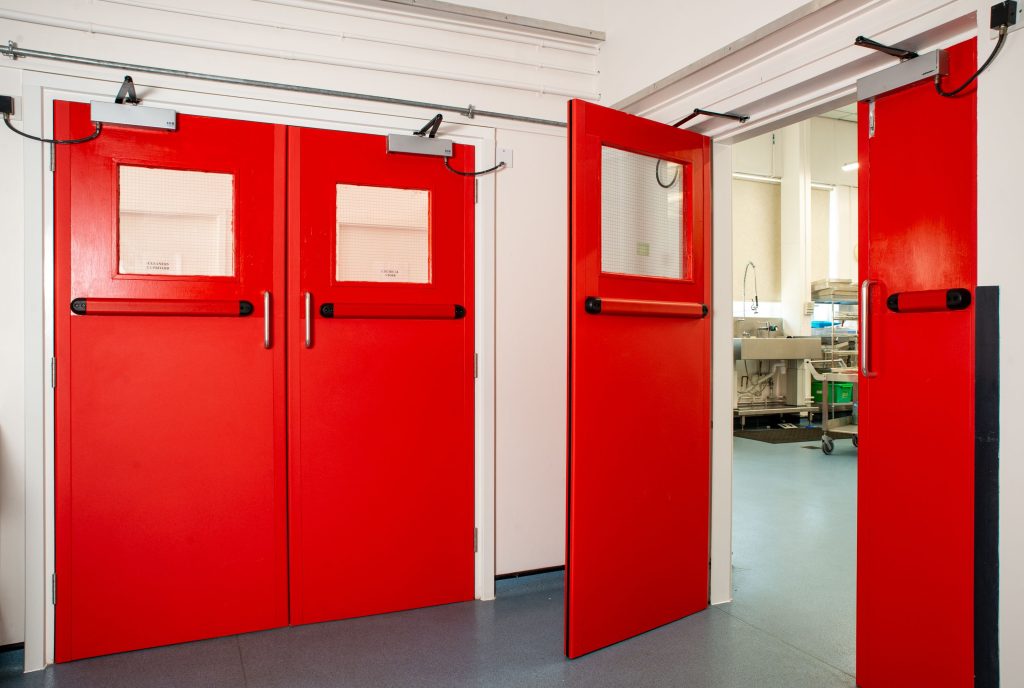Introduction to Fire Doors
fire door are critical components in the architecture of any building designed to ensure the safety and protection of its occupants. These specially constructed doors play a pivotal role in fire safety, acting as barriers to prevent the spread of fire and smoke between different sections of a building. Fire doors are meticulously engineered to withstand high temperatures and maintain their integrity during a fire, thus providing precious time for evacuation and allowing firefighters to contain and extinguish the blaze. Understanding the importance, functionality, and regulatory requirements of fire doors is essential for building owners, managers, and occupants alike.
Functionality and Design of Fire Doors
The primary function of a fire door is to compartmentalize a building, creating safe areas and containing the fire within a specific zone. Fire doors are typically made from materials such as steel, gypsum, and various fire-resistant woods, all of which can endure extreme heat. The design often includes intumescent seals around the edges, which expand when exposed to heat, sealing any gaps and preventing smoke and flames from passing through. Moreover, fire doors are usually equipped with self-closing mechanisms and fail-safe locks to ensure they remain closed during a fire. This sophisticated design not only restricts the fire but also minimizes the spread of toxic smoke, which is often more dangerous than the flames themselves.
Regulatory Standards and Compliance
Compliance with fire door regulations is mandatory in most jurisdictions, and these standards are typically stringent to ensure maximum safety. Building codes, such as those outlined in the International Building Code (IBC) and the National Fire Protection Association (NFPA), specify the requirements for fire door ratings, installation, and maintenance. Fire doors are rated based on the duration they can withstand fire exposure, commonly ranging from 20 minutes to 3 hours. Regular inspections and maintenance are essential to ensure that fire doors function correctly in the event of a fire. Non-compliance can result in severe penalties, including fines and legal liabilities, and, more importantly, can jeopardize the safety of building occupants.
The Role of Fire Doors in Evacuation Plans
In the event of a fire, a well-structured evacuation plan is crucial for the safe exit of building occupants. Fire doors play a significant role in these plans by providing secure passageways and helping to contain the fire, thereby protecting escape routes. The strategic placement of fire doors in stairwells, corridors, and between different sections of a building ensures that occupants can move to safety without being exposed to direct flames or smoke. Additionally, fire doors help in maintaining structural integrity, allowing more time for emergency services to arrive and perform rescue operations. Effective evacuation plans that incorporate the use of fire doors can significantly reduce the risk of injuries and fatalities during a fire incident.
Maintenance and Inspection of Fire Doors
Regular maintenance and inspection of fire doors are imperative to ensure their optimal performance in the event of a fire. Fire doors must be inspected at least annually by qualified personnel to check for any signs of wear and tear, damage, or malfunctioning components. This includes verifying that the doors close properly, the seals are intact, and the self-closing mechanisms and latches are functioning as intended. Any deficiencies must be promptly addressed to maintain the door’s fire-resistance capabilities. Furthermore, staff and occupants should be educated on the importance of keeping fire doors unobstructed and closed, as propping them open can severely compromise their effectiveness. Implementing a robust maintenance schedule and fostering a culture of fire safety awareness can enhance the overall safety of any building.
In conclusion, fire doors are a vital aspect of building safety, providing essential protection against the spread of fire and smoke. Their specialized design, adherence to regulatory standards, and strategic role in evacuation plans underscore their importance. Regular maintenance and inspections ensure that fire doors remain in optimal condition, ready to perform their life-saving functions when needed. By understanding and prioritizing the role of fire doors, building owners and occupants can significantly enhance their safety and preparedness in the face of fire emergencies.


